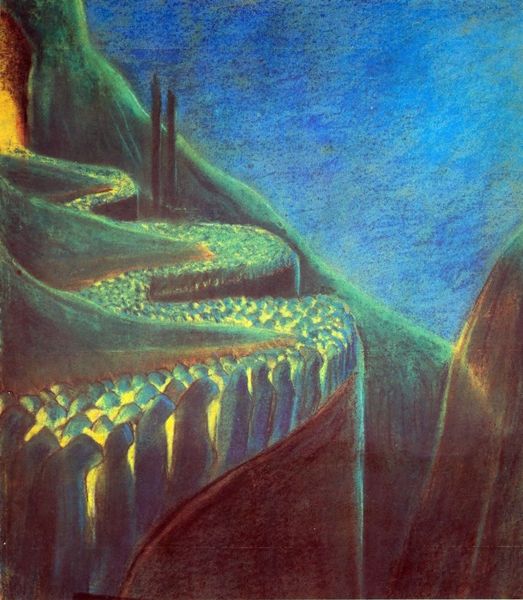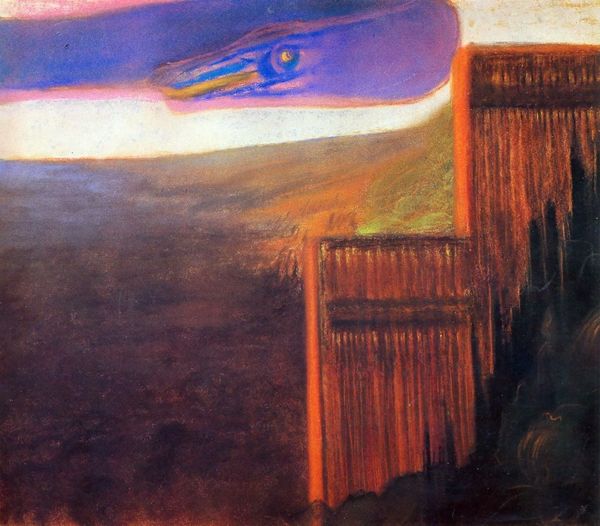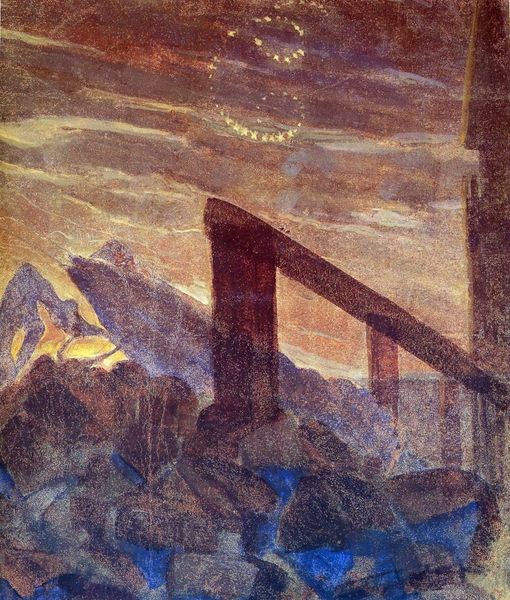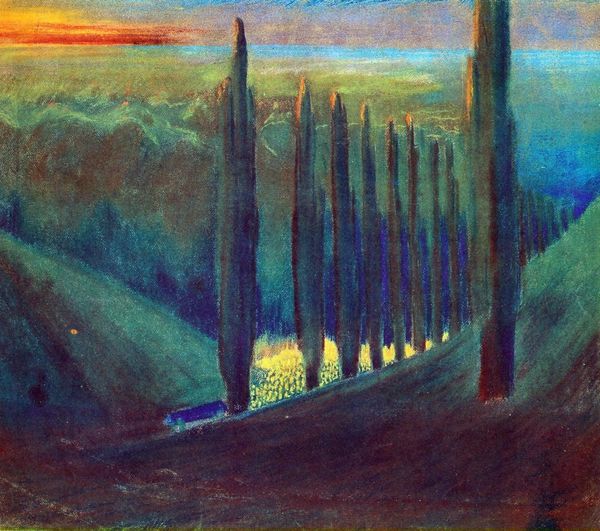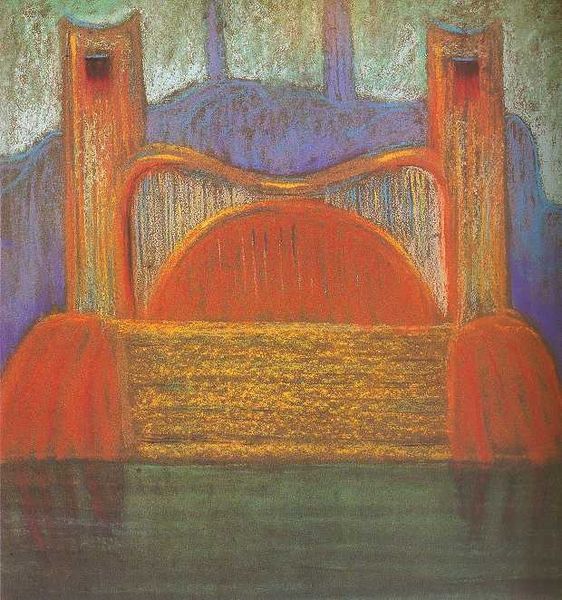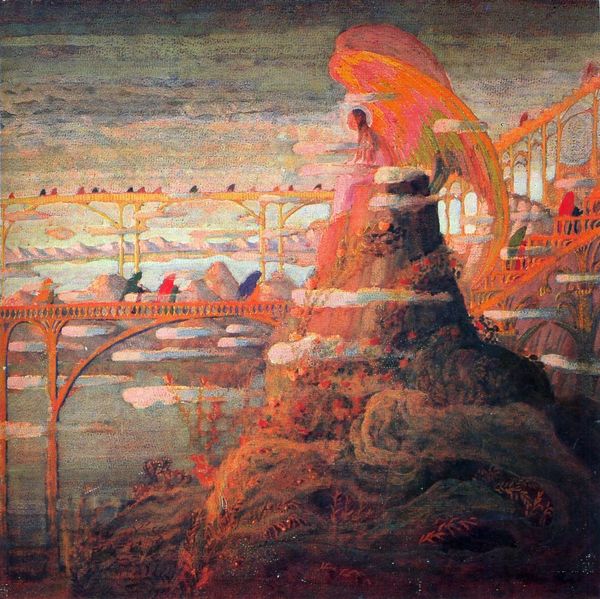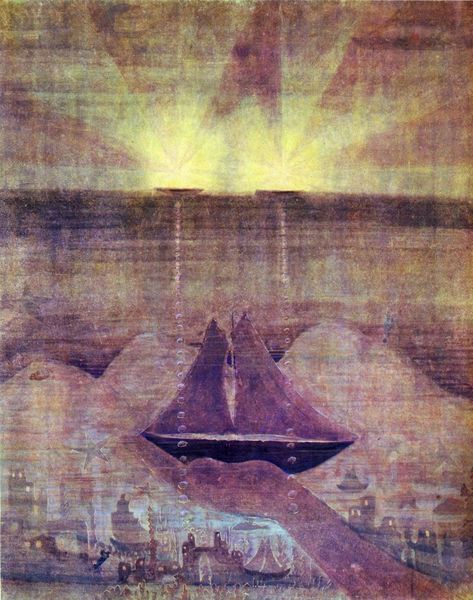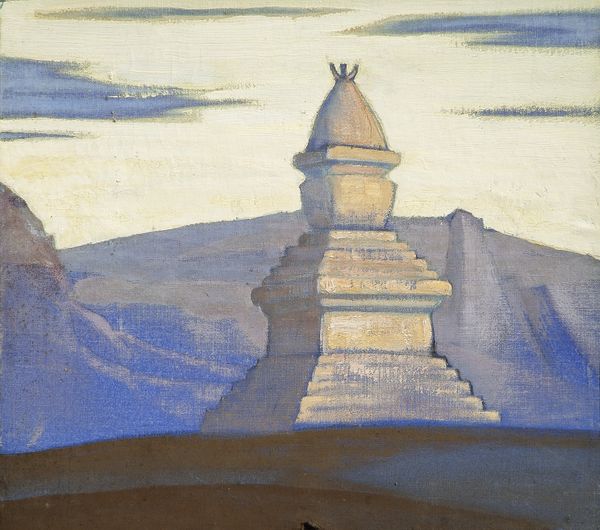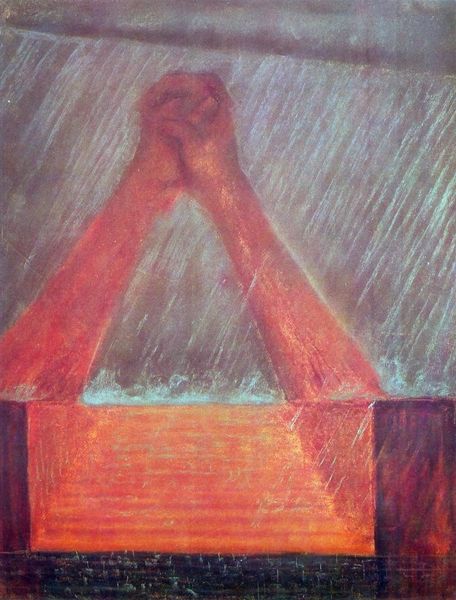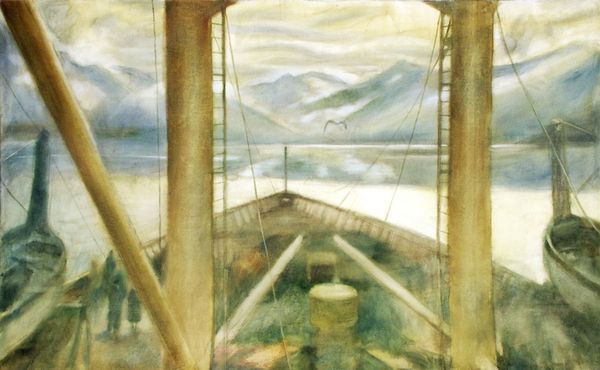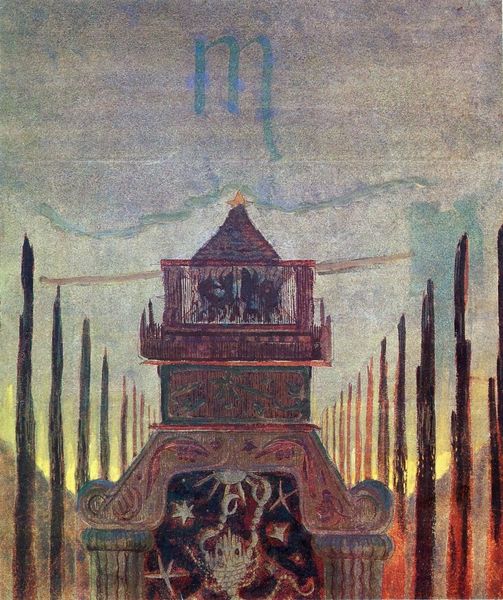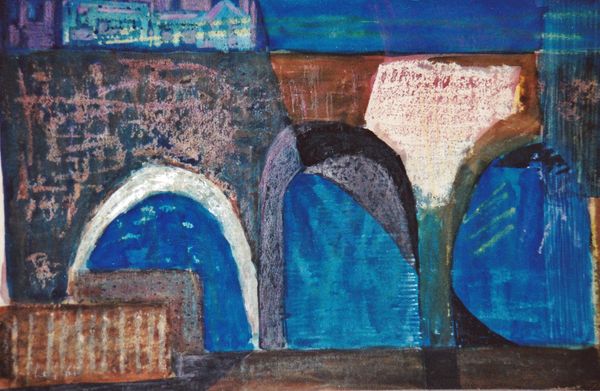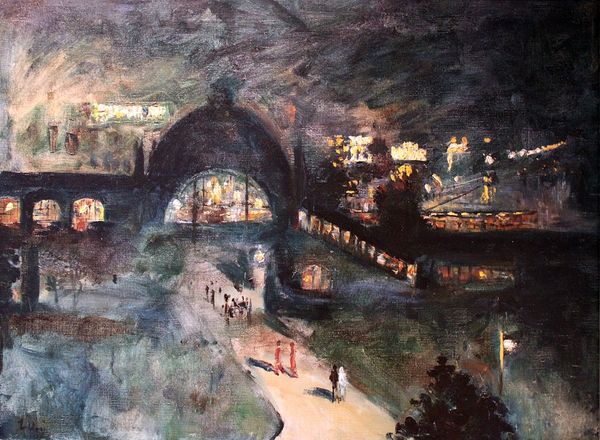
tempera, painting
#
allegories
#
sky
#
abstract painting
#
tempera
#
symbol
#
painting
#
landscape
#
impressionist landscape
#
oil painting
#
expressionism
#
symbolism
#
expressionist
Dimensions: 59 x 72.3 cm
Copyright: Public domain
Curator: Here we have Mikalojus Konstantinas Ciurlionis's "Deluge (I)" from 1904. It's a tempera painting, quite striking in its use of color and composition. What's your immediate take on this, as you gaze upon it? Editor: Immediately? A profound sense of upward striving... or maybe impending doom seen through butterscotch-tinted glasses. Seriously, though, there’s something both hopeful and unsettling in that climb, and that yellow is pure emotion. Curator: Interesting you say that. Ciurlionis, active in the Symbolist movement, often imbues his landscapes with layers of meaning. Considering the title "Deluge," do you see any societal or religious anxieties reflected here, a time ripe of major political reform that shifted cultural aesthetics in artistic expression? Editor: Oh, absolutely! The stairs could represent spiritual ascent, or the challenge to be devout. However, a symbolist's paradise quickly transforms into the staircase to oblivion. That impending “deluge” becomes a question of whether it's a purifying force or an apocalyptic one, as portrayed within these colors. The perspective's off-kilter—unreal. It hits you right in the gut. Curator: Indeed. Ciurlionis sought to create total works of art, blending music, painting, and literature, an intellectual melting pot reflected within the composition, palette and the cultural shift of a symbolist paradigm in Lithuania during an era where the Russian Empire shaped politics and governance. How might that context play into your viewing? Editor: Knowing that he wanted this multimedia experience does color it, doesn't it? The visual elements become chords, the colors are notes of high intensity, maybe an uneasy prelude to something turbulent. But I still believe a strong connection in an almost childlike attempt in hope through simple colors and symbolism. I still feel conflicted! Curator: Well, that speaks to its success. Ciurlionis offers an interpretive experience—an emotional space to project our hopes and fears, shaped by context but deeply personal. It remains culturally and historically thought-provoking to this day. Editor: Exactly. Art that makes you feel, that gets under your skin – that's a sign it's tapped into something primal. I still don't want to climb those stairs!
Comments
No comments
Be the first to comment and join the conversation on the ultimate creative platform.
